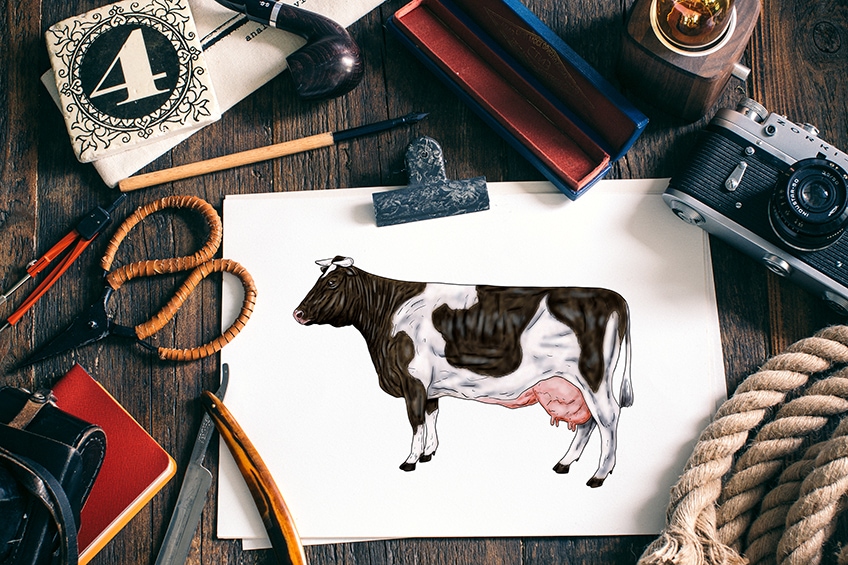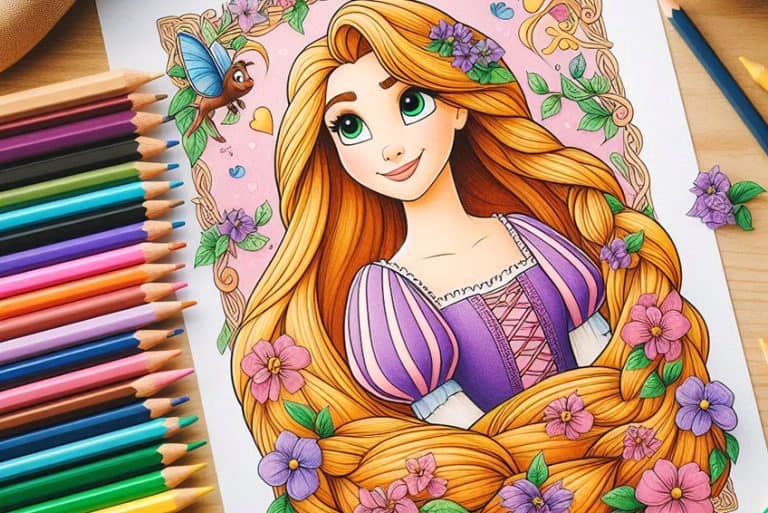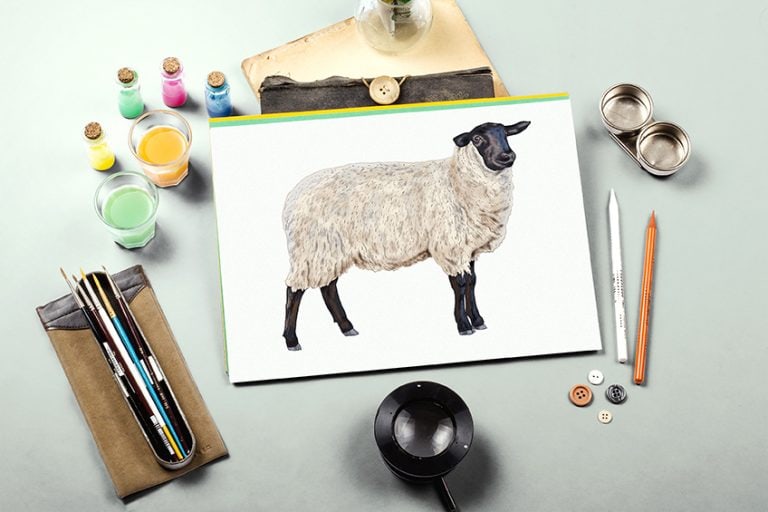How to Draw a Cow – The Best Tutorial for Easy Cow Drawing
Have you ever wanted to know how to draw a realistic cow? If this sounds like you, then you have come to the right place! In this tutorial, we have compiled all our knowledge and our top drawing tips to help you create a wonderfully realistic drawing of a cow without any fuss or bother. From the shape to the coloring, we guide you through everything in easy-to-follow steps.
Our Guided Step-by-Step Cow Drawing Tutorial
Of all the animals on a farm, cows are not the most difficult to draw. With our tutorial, cow drawing becomes even easier as we break the process down into easily manageable steps. We begin by using construction lines and shapes to lay down the foundational shapes of the cow’s body, and then we move onto adding details and coloring. You can see an outline of the tutorial steps here.
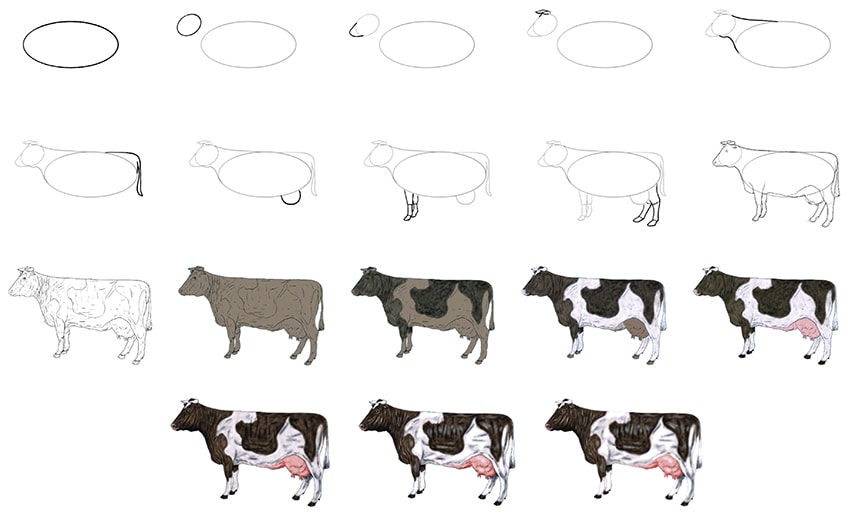
We make our drawing tutorial even more accessible to all artists by making it easy to adjust the color stages for your chosen medium. Whether you are a graphic artist, or you prefer to work with paints or pencils, this tutorial is suitable for you. So, without further ado, gather your drawing supplies and let us get started with our easy cow drawing tutorial.
Step 1: Drawing the Construction Shape for the Main Body
It is always a good idea to begin any animal drawing by constructing the largest part of its body. As such, we are starting our cow drawing tutorial by laying down the basic shape of the main body. Begin by drawing a large horizontal oval in the center of your canvas.
Our top drawing tip for this first step is to ensure that you leave plenty of space on all sides of this first construction shape, as we will be adding the other parts of the cow’s body around it.

Step 2: Drawing the Head Foundation
In the second step, we are going to continue with our construction shapes and use a diagonally angled oval shape to represent the base of the cow’s head. Draw this head oval to the left of the main body oval.
There should be a fair amount of distance between the head and main body ovals to leave space for the neck.
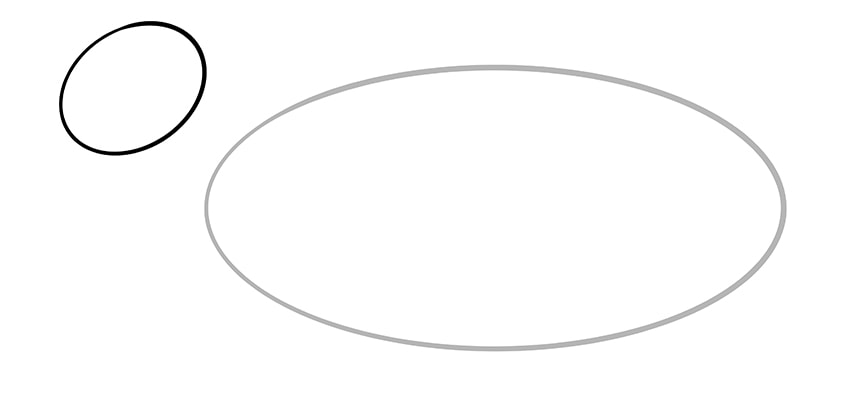
Step 3: Drawing the Cow’s Nose
Cows have a cone-like face shape, and we can capture this in our construction phase by drawing a slightly misshapen “U” around the end of the head oval.

Step 4: Outlining the Shape of the Horns
Step 4 is another simple step. All you need to do is draw two slightly angled horns on the top of the cow’s head. Both of these horns should be angled slightly down.
To get the right perspective, the horn closest to us should overlap with the furthest horn.

Step 5: Joining the Head and Body with the Neck
Now that you have laid down the basic shapes of the cow’s head, it is time to draw in the necklines to connect the body and head in your cow sketch. Begin with the top line, creating a gentle curve from the top of the head oval shape onto the top of the main body oval.
For the bottom neckline, begin at the point where the nose meets the bottom of the head oval, and curve this line up to create the chin. You can then arch the line down to join the main body just below the front point.
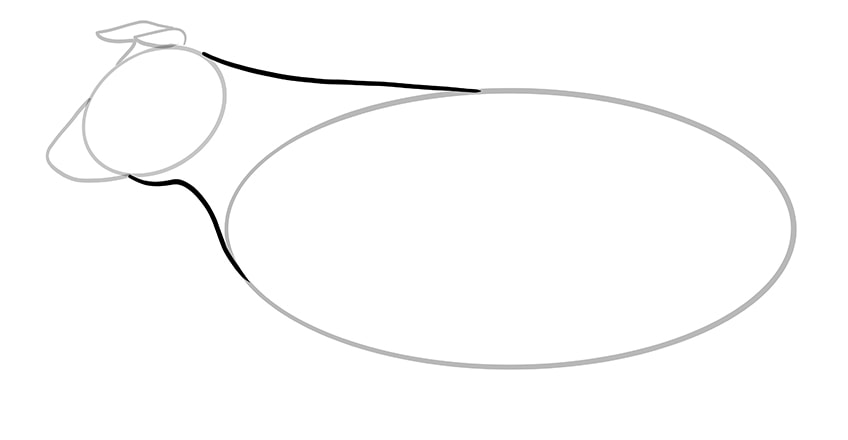
Step 6: Shaping the Rump and Tail of Your Cow Drawing
There are two parts to this step. Firstly we are going to create the shape of the cow’s rump, and then we will create the shape of the tail. Both of these parts can be completed with a single line. Cows have quite square rumps, so begin by taking a line from the top of the body oval, and create a slightly square but curved shape that extends until it is in line with the back of the main body oval.
Once you have curved down by 90 degrees, take the line down to create a curvy tail shape that drops as low as the bottom of the main body oval. You can finish this step by taking the line back up to a point, and then taking it down to join the back point of the main body.

Step 7: Constructing the Cow’s Udders
In this step, we are going to use an incomplete circle to lay the foundation for the cow’s udder. We will be adding more details in later steps, but for now, simply draw an incomplete circle underneath the main body oval shape towards the back.
Remember not to make the udder too far back because we still need to lay down the foundations for the back legs.

Step 8: Drawing the Shape of the Front Legs
If you take a look at the final drawing at the end of this tutorial, you will see that the cow has a slight square bump on its chest just in front of the front legs. As such, we need to leave some space just after the neck joins the main body oval to allow for this before we draw the front legs. For the first front leg, the one that is closest to us, use two straight lines that angle towards each other to create the cow’s thigh. Use a short curved line to create the joint, and then create the bottom of the leg with two parallel lines. Finish this leg by drawing a hoof shape.
The second leg is further away from us, so it will appear slightly shorter and thinner. You can simply repeat the process for this leg, just making it a little smaller.
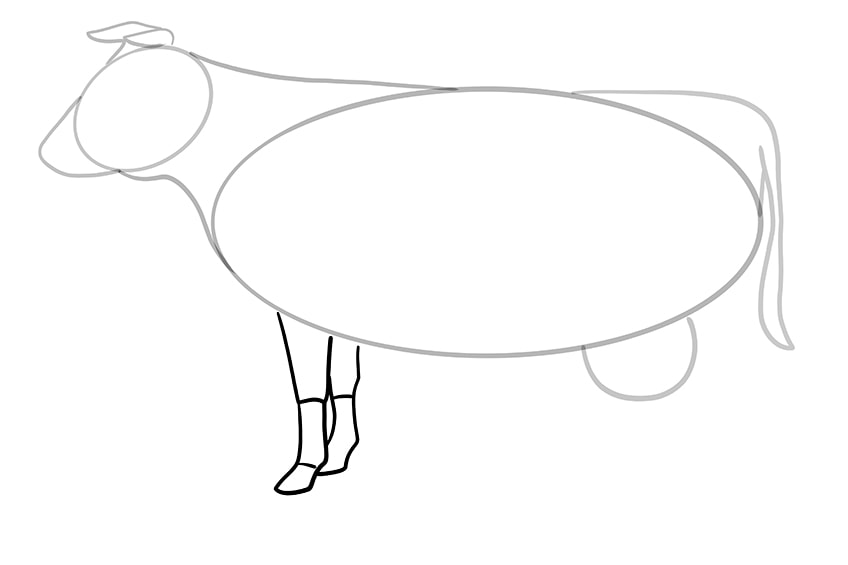
Step 9: Adding in the Shape of the Back Legs
For the back legs, you can use exactly the same process as you did for the front legs. The only difference is that these legs are much larger, a little curvier, and angled slightly forward. Begin with the very back leg which is the one closest to our perspective. The back of the thigh should curve quite strongly, and the front line of the thigh is hidden from view by the udder.
The second leg should be slightly more angled, and you can draw only the bottom segment and the hoof as the rest is hidden from our view.
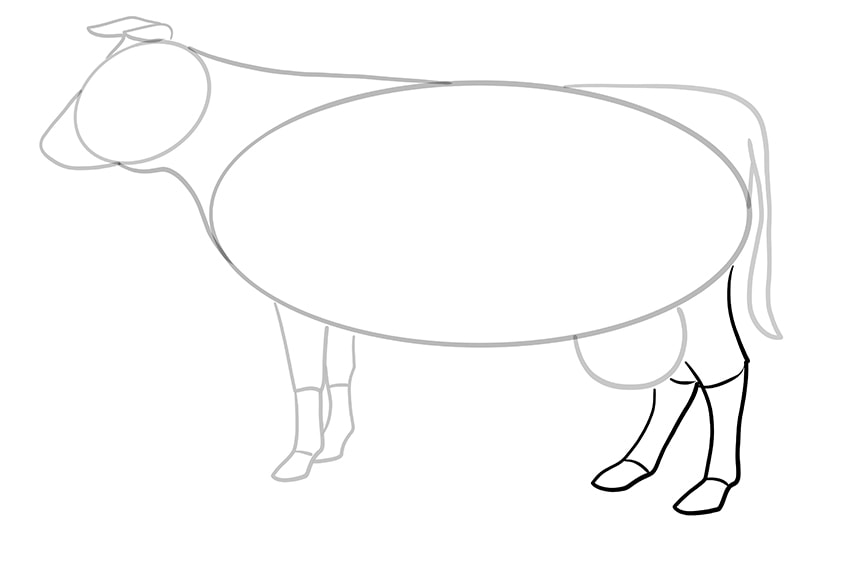
Step 10: Time to Outline!
After all that hard work with the construction lines, it is finally time to put them to use. Using these construction shapes as your base, you are now going to create the final outline of your cow drawing.
Let us begin with the head. You can follow the construction lines very closely here, and while you are at it you can add some facial details. Below both horns, draw two little ears, making sure that the one behind the cow’s head is much smaller. You can then draw a little eye below the horns, add a nostril on the nose, and use a small line to create the separation of the lips. You can now follow the neck outline on both sides.
For the rest of your cow drawing, you can follow the construction lines quite closely, adding a few lumps and bumps – like the one on the chest – for added realism.
When you come to outlining the tail, you can add a few little strokes at the end to give the impression of hair. You can follow the leg construction lines fairly closely too, adding a small line in each hoof for definition. For the front and rear leg facing us, you can take the leg lines up into the main body. On the udder, draw four teets, and complete the outline by drawing the cow’s belly.
When you are happy with your final outline, you are ready to erase any remaining construction lines and move onto the next step.
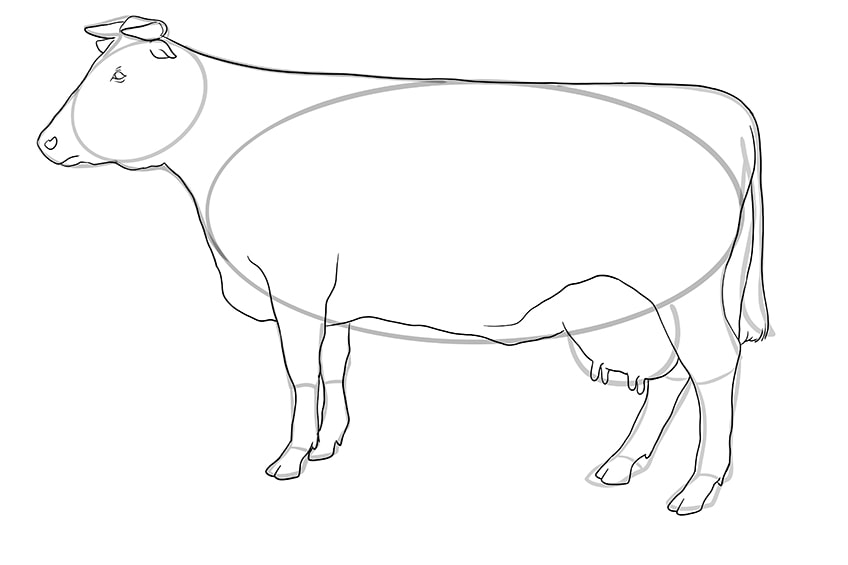
Step 11: Adding Patterns and Textural Details
This step may appear to be an intimidating step up from the last, but it is actually much more simple than you think. We are going to use different lines and markings to create the color pattern on the cow’s body and creating a realistic coat texture.
Begin at the neck, adding a series of quite heavy lines curving down the neck to give the impression of creased skin. You can then add some short lines and dots to the face of the cow drawing, using them to contour around some of the facial features like the eye and nose.
For the patterns and textures near the drawing outline, you can give them a slight curve to make them appear wrapped around the body, creating more three-dimensionality.
Finish this step by using squiggly lines to create some cow-like color patterns throughout the body. You can follow our example, or let your imagination run. Once you have your pattern laid out, use some final lines and markings to create texture throughout the rest of the cow’s body.

Step 12: Painting the Base Color Coat
Our cow drawing has a range of different shades throughout its body, and we are going to build these up in layers. We begin with our base coat which is an even shade of a darkish gray tone.
Regardless of your chosen color medium, make sure that this base coat is even and smooth throughout the entire body of the cow.

Step 13: Adding the Darker Parts of the Pattern
In this step, you are going to use some black paint to lightly color in the patterns you drew on the cow’s skin. You want this coat to be quite light, so we suggest dabbing the paint on lightly so that it appears a little dabbled.
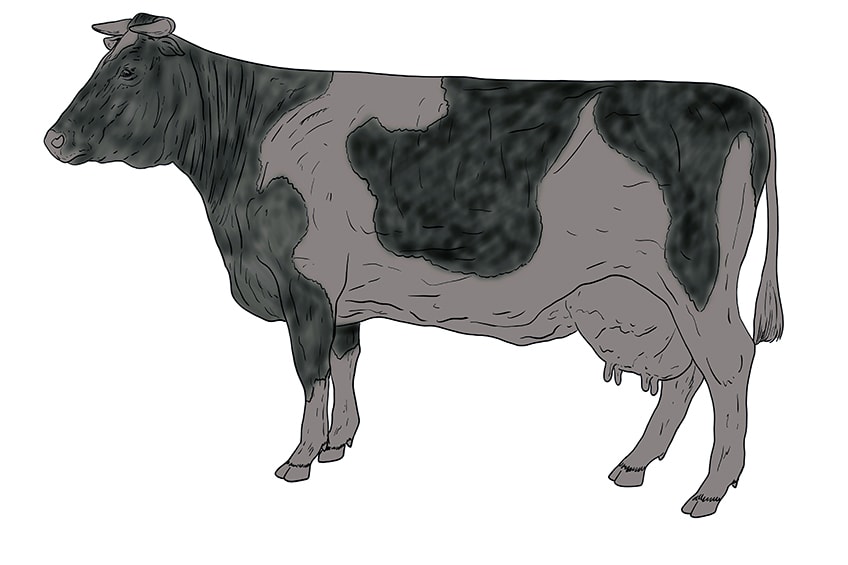
Step 14: Coloring the Other Pattern Shade
In the last step, we colored the darker parts of the pattern, and now we are going to use white to color the other half of it. Use a similar dabbing technique to lay down your white color on all the parts left blank in the last step.
It is important to color the eye, horns, nose, tail, and forehead white, as these are accent areas.

Step 15: Using Color to Create Details
For this step, all you need is a small brush and some light pink color. Using this light pink, carefully shade in the lower belly area and the udders of your cow drawing.
You can also add a touch of this pink shade to the nose area.
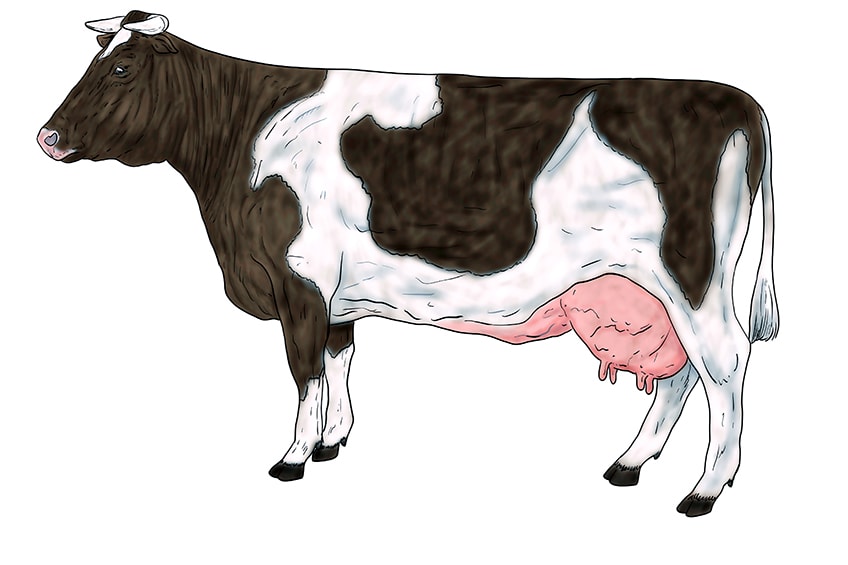
Step 16: Creating Dimension with Shadows and Highlights
In this second last step, you are going to use black and white to create shadows and highlights throughout the body of your cow sketch. Begin with a small brush and a touch of black paint. Start tracing along the texture lines you created earlier, adding contouring throughout the cow’s body wherever the light would naturally not fall. You can then take a little white paint and do exactly the opposite – adding small touches of highlight along the peaks of some of these shaded areas to create a contrast between the shadows and raised areas.
For both the shadows and highlights, you can use a dry and soft brush to gently smear the highlights and shadows, creating a more natural blended effect.
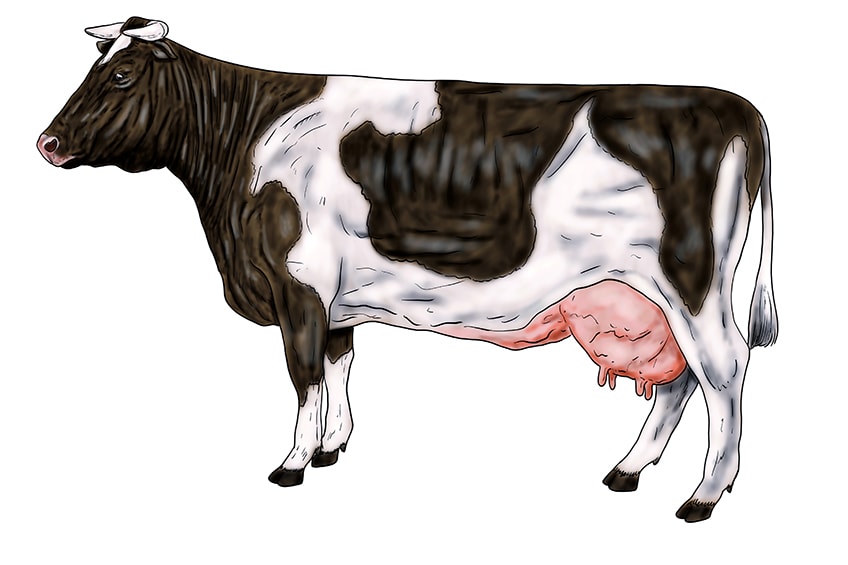
Step 17: Adding the Finishing Touches
If you are happy with your drawing of a cow, then you are more than welcome to leave it as it is. If, however, you desire a more seamless appearance, you can use the corresponding color at each point of the outline to erase it. Simply use these shades to trace over the outlines to create a beautifully smooth and realistic cow sketch.

It is now time to stand back and admire your realistic and easy cow drawing. We have covered everything that you need to know about how to draw a cow, and we are sure that you have produced a stunning drawing of a cow. Happy drawing, and we hope to see you soon with one of our other animal drawing tutorials!
Video Tutorial on How to Draw a Cow
Frequently Asked Questions
How do You Capture the Right Perspective in Your Drawing of a Cow?
The best way to capture perspective and dimensions in your drawing of a cow is to begin by using construction lines and shapes. This way, you can lay down the shape of your cow sketch before you begin adding any details.
Can Anyone Follow this Cow Drawing Tutorial?
Absolutely. This tutorial is designed to be easy-to-follow for artists of all and any level. Whether you are simply wanting to brush up on your cow drawing skills, or this is your first time attempting to draw an animal, our tutorial makes the whole cow drawing process easy.
Matthew Matthysen is an educated multidisciplinary artist and illustrator. He successfully completed his art degree at the University of Witwatersrand in South Africa, majoring in art history and contemporary drawing. The focus of his thesis was to explore the philosophical implications of the macro and micro-universe on the human experience. Matthew uses diverse media, such as written and hands-on components, to explore various approaches that are on the border between philosophy and science.
Matthew organized various exhibitions before and during his years as a student and is still passionate about doing so today. He currently works as a freelance artist and writer in various fields. He also has a permanent position at a renowned online gallery (ArtGazette) where he produces various works on commission. As a freelance artist, he creates several series and successfully sells them to galleries and collectors. He loves to use his work and skills in various fields of interest.
Matthew has been creating drawing and painting tutorials since the relaunch in 2020. Through his involvement with artincontext.org, he has been able to deepen his knowledge of various painting mediums. For example, watercolor techniques, calligraphy and lately digital drawing, which is becoming more and more popular.
Learn more about Matthew Matthysen and the Art in Context Team.


